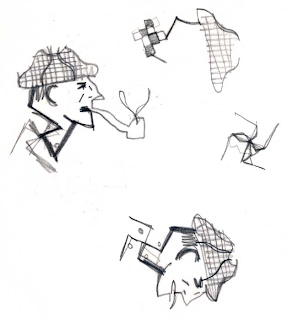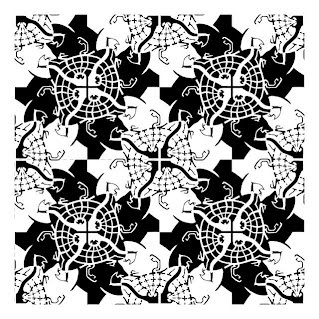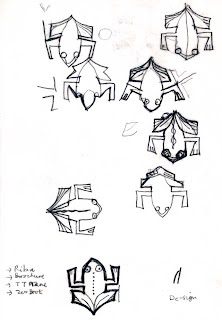Of interest are the various ways and means of designing life-like tessellations. As such, it is all too easy to become stuck in a rut with one’s own ideas, and seeing other people’s procedures may offer up new thoughts and ideas. I begin with a brief discussion as to the two main ways, albeit with leeway as to procedures within any one category, followed by an open question as to which is the best. This is then followed by some examples of the design process from other contemporary artists.
A Motif Already in Mind An open question is to which of the methods above can be described as the best. Certainly, the mathematical premise will always guarantee a tessellation, but typically, not always of a high standard in terms of life-likeness. Furthermore, and although not necessarily, it has a tendency to lead to bird and fish motifs, of which these can be described of a lower tariff, being easier to design. More challenging would be other motifs, such a human figures, or quadrupeds. The other method of the motif ‘already in mind’ has the advantage of a lifelike outline, but then the question (at least by hand) of how to adapt this as a tessellation arises, with the resultant compromises in outline; much additional work is typically needed. This though has the advantage in that more exotic motifs can be tried rather than the lower tariff bids and fish, as detailed above. Both methods have advantages and disadvantages that roughly equal out in terms of designing time require for a given tessellation. Below I show some advocates of the design procedures above: Andrew Crompton (motif already in mind) Sherlock Holmes Created 14 February 2014 |


